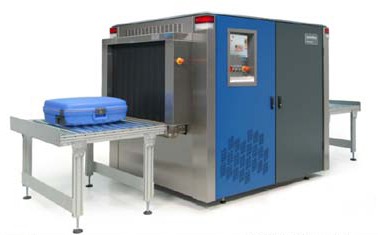Cabin Baggage Screening

The screening of hand baggage is a challenging process requiring a high commitment of manpower and resources to detect threats that may be well concealed among the millions of bags that are carried through airports daily.
All of the airport hand baggage screening security technologies have one thing in common: The final decision about whether a bag will be placed on a plane rests in the mind of a human operator. While advances in security technologies are crucial, all screening equipment must be used in conjunction with highly-trained and motivated personnel.
The problem of finding threats in hand baggage is complicated by the diversity of what passengers pack in their baggage. The problem of spotting IEDs is further complicated by the fact that plastic explosives have densities and characteristics which make them appear similar to many non-threat, organic materials (such as plastic, leather, rubber, paper, textiles and foodstuffs) routinely carried in baggage. If an explosive device is present in a packed bag it will almost certainly be partially obscured by denser innocuous items.
Hand baggage screening X-ray machines are typically conveyor units usually consist of three main parts:
- Main Body: This houses the X-ray tube; tunnel with overlapping lead impregnated curtains at the input and output ends of the tunnel; and perspex screens.
- Conveyor: This moves the items through the X-ray tunnel and produces them for collection or searching.
- Control Console: This features the keyboard for operating the machine and using the image enhancement features; and a television monitor – sometimes two monitors – for analysing the X-ray images. The images can usually be electronically retained and manipulated after the item has passed though the X-ray beam. Once an image has appeared on the screen, the image will remain on the screen until it is replaced by the image of the next bag, even when the bag is gone.
The use of conventional x-ray inspection to screen hand baggage has improved. The original systems were fluoroscopes with poor penetration, resolution and dynamic range, and a high radiation dose to the baggage and also possibly the human screener. Systems have improved and can now provide the screener with detailed information (via dual x-ray energy) of the composition of the contents of the bag. Most X-ray imaging systems employ methods of image enhancement to increase the visibility of the acquired image but most still depend on an operator to make the detection decision.
The X-ray tube may be fitted at the top, base or side of the unit. The X-ray beam is emitted in a very thin vertical ‘slice’, to greatly reduce the radiation levels inside the unit. As an item passes through the conveyor unit, it breaks a light beam and this triggers the X-ray tube to operate. X-rays are generated by the emitter and pass through the object being x-rayed. The detector measures penetration results. These results are translated by computer into the picture, allowing the operator to discriminate between different types of matter. When the item clears a second light beam, the X-ray tube switches off.
Advanced technology X-ray machines screen bags from two angles instead of one and show the images on side-by-side screens.



